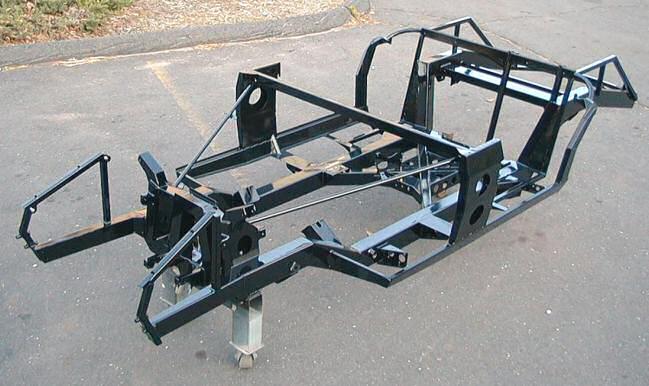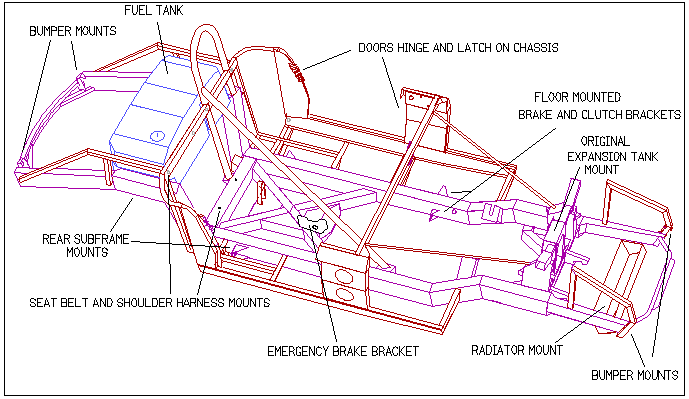Because
the inner panels of body rivet
and bond to the chassis, we have
created a semi-unitized structure that extends from the front of the
engine
compartment through the rocker panels and along the rear of the
passenger
compartment. Assembling the car with this degree of integration may
take
a little longer, but you end up with a much stiffer
overall structure. Our bare chassis
has been measured at
approximately 3200 lbft/deg. The body and inner panels will
add at
least an additional 300 lbft/deg. Not bad for an open car!
Our suspension pickup points feed loads
directly
into the chassis, minimizing
bending moments. Where there are practical limitations, large sections
and/or
reinforcements are designed in. The chassis
allows the suspension
to take full advantage
of today's advanced tire technology.
Our
optional roll
bar is
actually functional,
bolting directly
to the main chassis rails. Kind of nice, considering some
other replicas'
bars are there just for
show! While
we're on the safety stuff, note that all the seat
belt and shoulder harness mounting points (with
threaded inserts)
are designed into the chassis.
And a
little Crash Protection: Our chassis
has three stages of impact dissipation.
- The bumpers will collapse progressively
until the bracket contacts the
front
of bumperette.
- When the front bumpers are hit hard enough, the
chassis is designed to have
controlled shear where the bumper brackets are attached.
- The kickups in the front section of the chassis
are designed to distort
progressively up and back under severe impact.
Frankly, the doors,
while steel lined,
don't offer much side impact protection. The original latches
are just
not strong enough for us to justify such a claim. Our
construction
is just designed to keep the doors from sagging.
Back to
the 289
Home Page!!

fia/chassis.htm
1-25-2001 |

